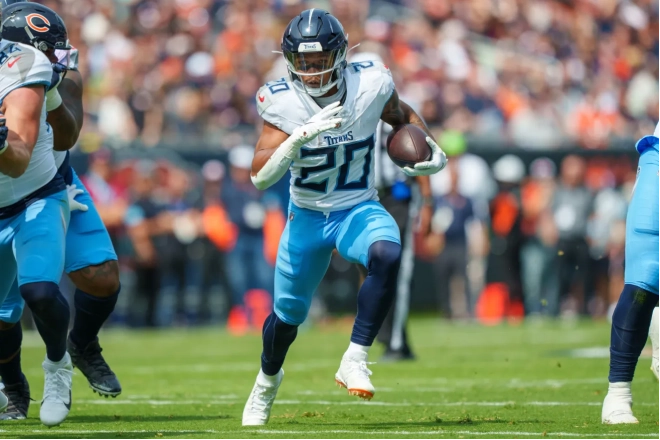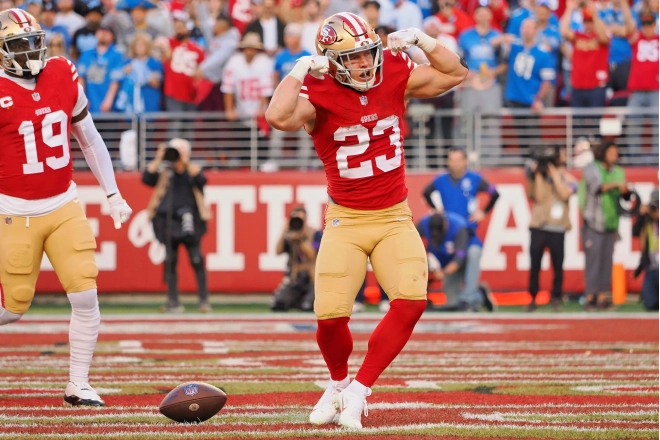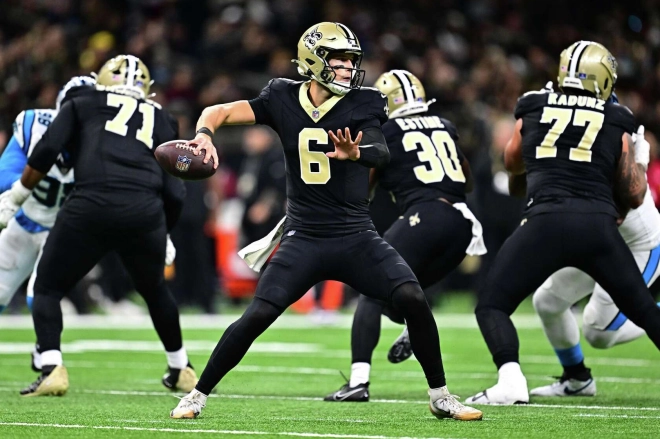If you do not recall, the 401K method views your roster as a portfolio of assets. These should grow in value over time. It’s primary concern is not to win year one, but lay a solid foundation of growth assets so that you will be in position to win annually. It identifies what assets to invest in by identifying premium position production and player growth potential. Then as time passes sell player assets at a profit. Finally purchase other growth assets cheap to do it all over again. Over time you will build a roster of core assets and flip players. Fodder, or average players that do not give you an advantage over other owners will be reduced. If you have not read it, you can do so here.
When you start playing in a new league, what league you select is something to consider. The rules and settings can either help or hinder the 401K process so be selective. Leagues with deep rosters or start IDPs are optimal. Leagues that start two quarterbacks, give premiums to running backs and/or tight ends are also to your advantage to play in . All these leagues increase the possibilities on how to build a roster. Because some teams will grab players and positions you are not interested in, it reduces the competition for the players you are targeting. Leagues that include rookie picks (ie. rookie pick 1.1) over rookie players (ie. Leonard Fournette) are a must if you can find them. Rookie players can gain and lose value based on many factors including injury, what team drafted them, or even how they perform at the combine. Rookie selections neither gain or lose value because there is no name attached to the pick. For example Dalvin Cook was projected a potential top two rookie early in the draft process. Then his combine numbers came in worse than expected. His name dropped down the list and wide receivers Corey Davis and Mike Williams took his place in the conversation. Rookie picks are fluid and constant in value.
Another option to look for the Kentucky Derby style of draft positioning. This is a newer option in dynasty. In most leagues, a draft order is generated and you get what you get. In Kentucky Derby style an order is generated and then according to that order you choose what position you draft from. This increases flexibility and draft strategy. For the 401K method this is optimal because instead of being forced into a draft selection you choose the highest draft position available. Startup draft picks have value. In 401K you want to trade back to gain value. So choose the highest pick you can to trade back from.
This past March I joined a dynasty startup. It was Kentucky Derby Style, starting 10 IDPs with a RB/WR and a WR/TE flex spot. The league is standard PPR scoring. This league had a thirty-five round draft with an active roster of forty players and six taxi squad spots. It also contained rookie picks in the draft. It had the key ingredients that a 401K strategy is looking for. It also was a salary cap league ($110) with salaries tied to the round you draft the player. The salary cap format creates a dynamic that if you trade up you normally reduce the salary you spend and if you trade down you add salary to your cap. I won the ability to pick my draft spot 6th and in doing so I was able to draft from the 1.2 spot.
Trading is an intergral part of a startup draft so trade and trade often if the deals are there. The trades I made during the startup draft can be found listed at the end of this article. You may want to refer to them as I talk about trading. Trading was difficult in this league except for very early on. Owners were not going for the 2 for 1 deals within the startup draft itself. If trades were to get done they needed to match pick for pick and if you could get an extra 18 rookie thrown in it was a win. In the end I was able to trade for three extra players in the startup draft and four extra rookie selections in the 2018 rookie draft. Often you can get results if you trade when a pick is on the clock. In this particular league that did not happen. When I got on the clock I had targets and took them. The trades I made were to get to a specific spot in the draft and not for a specific player. The exceptions were trade #2 to grab an additional 2018 1st and trade #4 which was a salary cap manipulation to cut salary as well as move up to grab a better fourth wide receiver. Trade #3 comes from knowing the owners in your league. This gentleman will take multiple later rookie picks for a first round pick 90% of the time. After I grabbed an additional 2018 first I decided to capitalize on that tendency before anyone else could. Three 2018 1st round picks in my roster portfolio are some nice assets to own and will grow my roster nicely next year.
When you enter a start up draft you want to have a draft plan and an idea of where you want to be. To do this you need to either draft a lot or be aware of current ADP. As for draft positioning I like the late second and early third round if I can stack picks. Normally wide receivers drop and you can catch several. If wide receivers don’t fall, rookie picks will. I also like round six to pick up a young upside quarterback and to catch some first round rookies. Round twenty was critical for me as the salary of players dropped to $1 there I wanted several picks in the round to grab some cheap assets most notably, quarterback Jared Goff and running back Jonathan Williams. Players drafted round thirty or later were eligible to placed on the taxi squad. If I could add a round thirty draft pick or two to get my choice of selections to place on the taxi squad that would be good too. Finally with 401K often drafting a draft pick is optimal as the draft selection will not lose value over the first months of the league. A minimum of five draft picks one in each round is a must. Owning seven to ten picks with multiple firsts is preferred. Eleven or more selections is a luxury with the 2017 rookie draft class.
You can find the entire draft here. Using these concepts plus the entire 401K strategy here is how my startup draft played out. This draft is a middle of the road draft. I did not go extreme in trading down. Similar results should be repeatable for you. The top three rookies went quickly leaving me wide receivers to choose from. I chose Alshon Jeffery over Cory Coleman at 3.2 I felt with free agency about to open in the NFL that Jeffery would get signed to a team with a WR need with the options out there it would be almost impossible to get him at 4.6. The gamble worked and Coleman was there. Quarterbacks went early in this league forcing me to reach a little for Carson Wentz at 6.12. The Wentz selection is critical with him on my roster, I could avoid the 2017 rookie quarterbacks and grab other rookie assets. If I needed to round out the position, I could wait until 2018 rookie draft. IDPs created the rogue picks I needed to add to wide receiver depth to the roster and add 2.1 rookie pick in round nine. When you look at the draft you will see how different teams select different players as they value things differently that you. This creates the advantage discussed above. In my case it was IDP in your draft it can be something else given your league settings. There are three elite TEs in this year’s rookie draft Evan Engram, David Njoku, and OJ Howard. I was projecting the 2.1 rookie pick to be either one of those three TEs or RB Samaje Perine when the rookie draft arrives. Yes, you want to have an idea of who will be available with rookie picks this helps aid in your decision making. This pick allowed me to pick up a fill in a TE starter for cheap knowing if I needed to I could fill it out in the rookie draft. This is how my startup draft went through nine rounds
2.12 Sammy Watkins (WR)
3.1 Davonte Adams (WR)
3.2 Alshon Jeffery (WR)
4.6 Corey Coleman (WR)
4.7 1.6 Rookie
5.5 1.7 Rookie
6.5 Josh Doctson (WR)
6.12 Carson Wentz (QB)
8.11 Kevin White (WR)
9.2 2.1 Rookie
In rounds ten and eleven, I drafted value veterans at running back. They were at a cheaper cost than other starters drafted (Lamar Miller 4.4 startup) by other owners earlier. Giovani Bernard predraft was in line for solid PPR production if he came back from the knee while TJ Yeldon is still young and likely to take over for an aging Chris Ivory. Both of these selections show why 401K normally does not put a premium on the running back position. The position is volatile and at the time of this writing Bernard will face competition with Joe Mixon and Leonard Fournette will be the starter in Jacksonville. Yeldon still holds some upside once he becomes a free agent (He has 2nd round/ 36 overall draft status) Rookie picks 2.4 and 2.5 at these spots would have held as much value if not more than these two running backs that were selected here.
The 3.1 rookie was a sneaky selection. Normally rookie picks are drafted in order. I took it after 2.8 rookie because if I took a vet or a second round rookie pick it would cost me the full price of $3 and 3.1 is the first of the $2 rookie selections saving me a dollar. I expected a similar player at 2.9 as 3.1 and the dollar saving was more important to me. I could have taken the higher pick and tried to trade back. Given trading in this league there was no guarantee the owner of 3.1 would want to trade it. I took the safer route and just drafted what I wanted. This sort of pick will not come up in many leagues but it is worth pointing out for this league.
This league starts 3 DL, 3 LB, 2 CB, and 2 S.
Linebackers are a dime a dozen and can be punted if necessary. This is how I view IDP and is a safe roster build using them. The elite linebackers are not worth where you will need to draft them. After they are gone many linebackers will score similar. The cornerback position is volatile. Usually you need to have a mediocre corner to make a lot of tackles for fantasy purposes. If that is the case the corner is more likely to lose his job. DL and S are the IDP positions you want to add with sprinkling a LB or two along the way. You don’t want to go heavy with IDP but you do need some to remain competitive. In a salary cap league streaming IDPs weekly will burn up your cap space. You can use the strategy but sparingly. After 19 rounds the draft results were:
10.11 TJ Yeldon (RB)
11.7 Giovani Bernard (RB)
12.11 2.6 Rookie
13.2 2.7 Rookie
13.9 Jason Pierre-Paul (DE)
14.11 Rookie 3.1
15.2 Danielle Hunter (DE)
15.9 Johnathan Cyprien (S)
18.11 Rookie 3.5
19.2 Tavon Austin (WR)
Round twenty and beyond is just taking shots at guys that may break out and adding rookie picks while they last. Jared Goff went round nineteen so I grabbed two quarterbacks back to back to replace him in my draft plans. Most of these picks will end up being fodder so, if you are going to take a chance take it on upside versus solid veterans. If there is a player you have to own go ahead and reach for him. For me that player is Vance McDonald. He has cheap upside and a nice sized contract for San Francisco. Jonathan Williams is another must have but I did not reach for him. Sammie Coates is a swing for the fences sort of player because you don’t know when Martavis Bryant will blow it and get suspended. Coates also played with a broken hand last year which explains his limited production. Leonte Carroo was my only taxi squad player I drafted. I chose him in case DeVante Parker does not pan out. When you draft a player at this point you should be asking yourself “How do they achieve their upside?” If you cannot answer that question or the answer is complex you probably should not be drafting the player. Kickers are "a choose your poison" position. I have a preference to roster them from good teams. Getting my kicker this early was worth not adding an extra rookie pick. It is best to grab a kicker in free agency, but it won’t kill you to grab your guy this late. Finally, 5.12 rookie was a whimsy pick. I took it out of order because I wanted to draft Mr. Irrelevant. Here are rounds twenty through thirty-five.
20.4 Ezekiel Ansah (DE)
20.7 Vance McDonald (TE)
20.8 Tyrod Taylor (QB)
20.9 Philip Rivers (QB)
20.11 Jonathan Williams (RB)
21.2 Clayton Geathers (S)
25.2 3.10 Rookie
26.11 Jake Ryan (LB)
27.2 Cameron Heyward (DE)
28.11 Sammie Coates (WR)
29.2 4.1 Rookie
30.8 Leonte Carroo (WR)
30.11 Jared Cook (TE)
31.2 Dan Bailey (K)
32.11 4.3 Rookie
33.2 Nigel Bradham (LB)
34.11 4.11 Rookie
35.2 5.12 Rookie
If you tally the positions drafted you would get the following results 2 QB, 3 RB, 9 WR, 2 TE, 1 K, 4 DL, 2 LB, 0 CB, 2 S, and 12 2017 Rookie Picks. I did not draft every starting position so I will need to pick them up before the start of the season. The twelve rookie picks adds flexibility to the startup roster and insulates my team from loss of value. If I can add two running backs that hit in the rookie draft this team has a chance to be competitive. Even if I am not in position for a RB there are several veteran options in free agency that can fill in for a season. The key will be not to force running back in the rookie draft. Every draft is different and has a life of its own. You do need to remain flexible and work with what falls to you. If you do you can build an impressive portfolio of dynasty assets.
Trades
Trade #1
I received: 2.12 (Sammy Watkins), 3.1 (Davante Adams) and 6.12 (Carson Wentz)
He received 1.2 (Ezekiel Elliott)
Trade #2
I received 4.7 (1.6 Rookie) 2018 1st
He received 2.11 (Jordan Howard)
Trade #3
I received 2018 1st
He received 2018 2nd, 2018 3rd, and 2018, 4th
Trade #4
I received 4.6 (Corey Coleman), 11.10 (Martellus Bennett, and 2018 3rd
He received 5.2 (LeSean McCoy and 6.11 (Terrelle Pryor)
Trade #5
I received 5.5 (1.7 Rookie), 6.5 (Josh Doctson), 11.7 (Giovani Bernard), 2018 3rd, 2018 5th
He received 4.11 (Lamar Miller), 7.2 (Alec Ogletree), 11.2 (Rashard Jones)
Trade #6
I received 13.9 (Jason Pierre-Paul), 15.9 (Johnathan Cyprien), 20.4 (Ezekiel Ansah) and 2018 3rd
He received 11.10 (Martellus Bennett) 17.2 (Ben Roethlisberger) 22.11 (Allen Hurns) and 2018 3rd
Trade #7
I received 20.7 (Vance McDonald) and 20.8 (Philip Rivers)
He recieved 16.11 (Zach Brown)
Trade #8
I received 20.8 (Tyrod Taylor), 30.8 (Leonte Carroo)
He received 23.2 (Brandon Graham) 24.11 (Geno Atkins)




